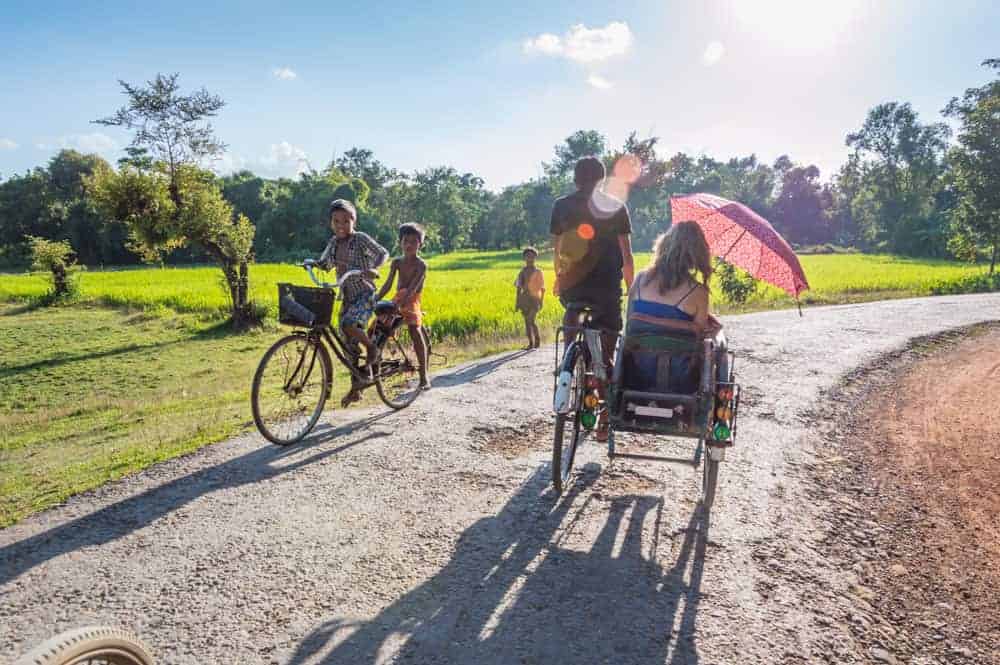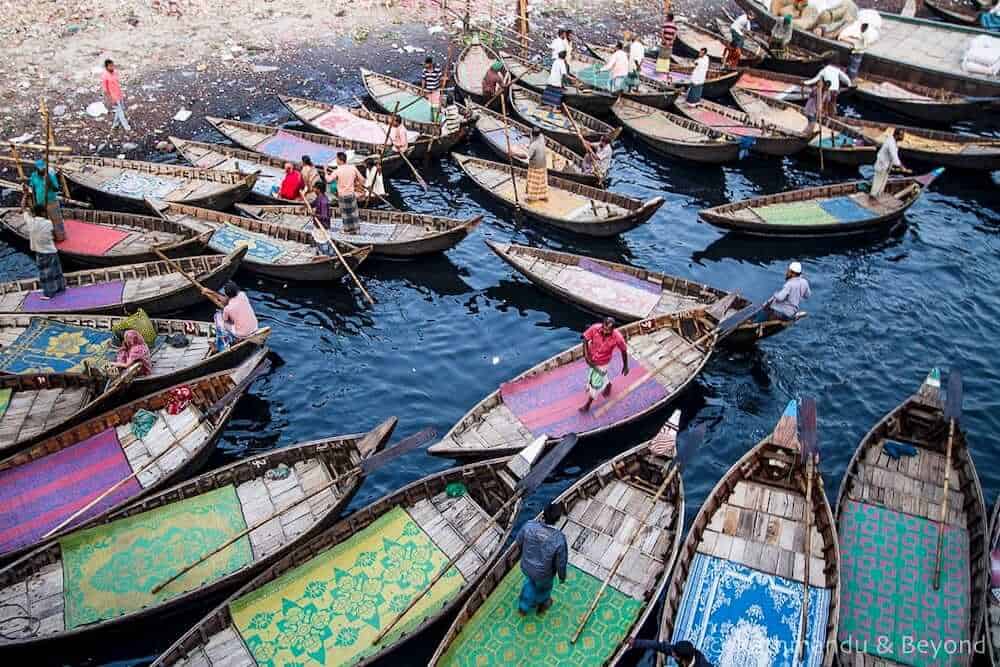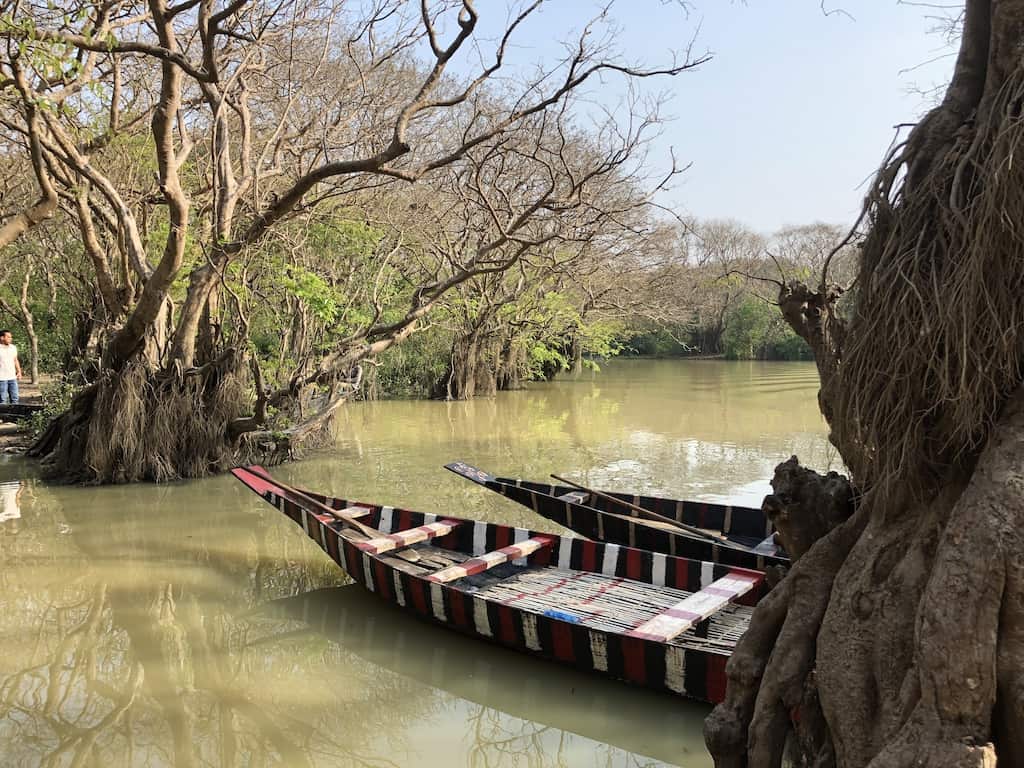Undiscovered destinations in South Asia
Explore 21 undiscovered destinations in South Asia: Myanmar, Bangladesh, Nepal, Sri Lanka, Maldives, and Bhutan
South Asia is one of the most populous regions on earth (largely because it includes India at 1.3 billion) and encompasses some of the oldest and most fascinating cultures. This post explores undiscovered destinations in Sri Lanka, Maldives, Bhutan, Nepal, Bangladesh, and Myanmar. In a separate post, discover 22 stunning offbeat places to visit in India.
I’ve spent the last 14 years traveling in South Asia, it’s my favourite region on earth. Though there is a lot of tourism to this region, the numbers are far less than Southeast Asia and it can still, at times, feel a bit unspoiled and unexplored. Add to this a vast rage of geographies from the world’s highest mountains — the Himalayas — to the beaches of the Maldives, and some of the most ancient, undisturbed cultures on earth.
There are many good reasons to visit lesser known and undiscovered destinations in South Asia. It bolsters the local economy and encourages local entrepreneurs, especially women (when it’s well managed), it can involve the entire community, and it eases the burden on overly touristy areas. Plus, it gives tourists a more authentic cultural experience and an opportunity to transcend typical tourism and really get to know the local people and culture.
Please read on as 21 travel bloggers offer their best suggestions for getting off the beaten path in South Asia! And for added reading, check out this post on the Best beaches in Southeast Asia and this post on this post on best destinations for families travelling in Asia.
Myanmar

Mrauk U, Myanmar. Photo credit: Wandering Wheatleys.
Mrauk U, Myanmar
Hidden Kingdom worth the trek
Myanmar is best known for the ancient temples of Bagan, but unfortunately, it’s popularity has led to it becoming rather overrun with tourists. These days Bagan feel a bit less authentic than a decade ago.
What most visitors don’t realize is there is another amazing location in Myanmar to get your temple fix. Located along the northeastern edge of Myanmar near Bangladesh, Mrauk U is so off-the-beaten-path you will actually be quite shocked when you encounter other tourists.
Mrauk U was the capital of the Arakan Kingdom for 350 years and was an important trading port on the Bay of Bengal. There you’ll find a vast plain of temples and pagodas dating from the 15th to 18th century. Plus you’ll be surrounded by cheerful, longyi wearing locals that still find the appearance of foreigners to be a pleasant surprise.
But reaching Mrauk U is no easy feat. First, you’ll need to catch a flight to the port city of Sittwe and then ride a local ferry five hours up the Kaladan River.
The government of Myanmar is currently in the process of having Mrauk U certified as a UNESCO World Heritage Site which will almost certainly lead to an increase in tourism in the near future.
We would recommend at least 2 days in Mrauk U, but don’t be surprised to find yourself slipping into the slower pace of life and lingering a bit longer in this little hidden gem of Myanmar.
Nick and Val Wheatley are photographers, travel bloggers, adventure-seekers, and storytellers. After traveling the world for the last three years they have settled in Ho Chi Minh City, Vietnam where they write about their expat experience slurping noodles and dodging motorbikes. They blog at WanderingWheatleys.
Kalaw to Inle Lake Trek
Interaction with rural villagers makes trip unique
The trek from Kalaw to Inle Lake in Myanmar takes 2-3 days, and each night is spent in a tiny farming village in a local’s homestay. While most tourists go straight to Inle Lake by bus or train, trekking to Inle Lake is the off-beat alternative.
Kalaw itself is a beautiful mountain village, and the perfect place to fuel up and get a great night’s sleep before starting the trek. There are a few trekking companies based in Kalaw that will provide a local guide for the trek to Inle Lake, however it is possible to trek unguided for a more intrepid experience.
Each day on the trek covers 10-15 kilometres, on relatively flat, dirt terrain. Locals from the many tiny villages in this area have been using the same trails to get around for decades. Scenery you’ll encounter include locals tending to their chilli fields and rice paddies, walking their water buffalo, and doing their part in day-to-day village life. There are no epic mountain views like other treks around the world, but the local kids who come running up to you asking for pictures so they can see what they look like in your camera, makes the trek a priceless off-beat experience.
The homestays on the trek are humble, and the best dorm-like accommodation was saved for guided tours. One night I slept in the spare room above the farmhouse, with a family of five in the room next to me, and could hear the cows snoring below me in the night! Although the homestay owners know minimal English, it’s always possible to communicate with a bit of charades and big smiles. Expect amazing home-cooked meals that are vegetarian-friendly, to shower outdoors using well water, and beautiful starscapes at night due to the remoteness of the villages. Trekking from Kalaw to Inle Lake and spending time in the local Myanmar villages is an experience you’ll always treasure.
Erika has been backpacking since she left the U.S. in October, 2017. You’ll find her searching for the best treks around the world, though she is currently based in the neon jungle of Tokyo, Japan. She blogs at ErikasAdventures.
Click here to get more ideas for a Myanmar itinerary.
Please read more posts in my series on off-beat and undiscovered places:
- 22 Stunning off-beat places to visit in India
- Responsible Tourism Guide to Thailand
- Responsible Tourism Guide to India
- Best places to visit in Goa, India
- Discovering the soul of Agra
Bangladesh

Sadarghat, Old Dhaka Bangladesh. Photo credit: Kathmandu and Beyond.
Old Dhaka, Bangladesh
Spellbinding Dhaka is like Calcutta on speed
“Dhaka is like Calcutta on speed,” a friend warned us ahead of our visit to Bangladesh. Having visited India countless times, I’m no stranger to the subcontinent’s “craziness” and I found the streets of Old Dhaka spellbinding. It sounds like a travel cliche, but Old Dhaka truly is one of those places where it’s more about the experience and less about ticking off a list of ‘must-see’ sights.
Sure, you should visit the 17th-century Lalbagh Fort, and Ahsan Manzil, the royal residence of the Dhaka Nawabs, known as the Pink Palace. But for me, the real Dhaka is found in the frenetic streets of the old city — a densely-packed part of the capital where pedestrians, cycle rickshaws, tuk-tuks (or baby taxis as they are known in Bangladesh), bikes, and taxis all vie for space.
Walking through the narrow lanes, we were frequently besieged by people wanting to say hello, ask a few questions, or have their photo taken with us. It was the overwhelming friendliness of Bangladeshis that won us over, not just in Dhaka, but throughout the country.
I never get bored of exploring local bazaars and one of my favourite parts of Old Dhaka is Bangshal Road where the artwork for Dhaka’s super-colourful rickshaws is produced. There is plenty more to discover but don’t forget to stop for chai at a local tea stall. Another highlight is Old Dhaka’s chaotic port area, Sadarghat riverfront. There you can take a trip in a small rowing boat around the harbour on the Buriganga river — it’s particularly photogenic in the late afternoon light.
Many airlines fly into Bangladesh and as the country’s capital, most travellers will first arrive at Dhaka airport where, like us, you’ll be greeted with your first of many wide smiles. I remember thinking that if everyone in Bangladesh is as friendly as the immigration police, we were in for a fantastic trip.
Full-time traveller and Asia addict Kirsty Bennetts travelled solo before sharing the last 20 years of travel with her husband, Mark. For the past 10 years, they’ve been chronicling their travel stories on Kathmandu & Beyond, a travel blog with a strong focus on photography and off the beaten path destinations and offbeat things to do in more established places.

Sylhet, Bangladesh. Photo credit: Lena of Nagoya Foodie.
Sylhet, Bangladesh
Serenity by boat
If you are looking for a place in South Asia that is off-beat you only have to visit Bangladesh. The whole country is so far from the beaten tourist path that I saw a total of three other tourists during my 10 days there.
There are many interesting places in Bangladesh, for example the old town in Dhaka, the Sunderbans, the biggest mangrove forest in the world, or Cox’s Bazar, the longest natural sea beach in the world — but I would like to introduce you to the beautiful nature found around the city of Sylhet, east side of the country.
The top place to visit from Sylhet is Ratargul Swamp Forest, a beautiful and serene place only accessible by boat. The scenery is like nothing I had seen before with twisting trees growing in the still waters and a variety of birds nesting and singing in the branches. Because the little boats are powered by muscle energy only it is very quiet and almost serene to be in this place so far away from civilization.
Other interesting places around Sylhet are Bisnakandi, a village at the border to India with a beautiful river flowing through, and the tea plantations just outside of the city — the biggest tea plantations in the world.
To get to Sylhet from Dhaka you can take a domestic flight, which is what I did. The flight is relatively cheap and takes only 45 minutes. You can also take a train, which of course is more of an adventure. The trains take between seven and eight hours if everything goes well.
There are also buses connecting Dhaka and Sylhet which take about five to six hours depending on traffic.
From Sylhet, your only option is to book a driver for the day. He will then take you to the places you want to visit. It is best to ask your hotel to organize a driver for you and to discuss with them the places that you want to visit since the drivers usually don’t speak any English.
Lena is the founder of Nagoya Foodie, a food and travel blog focused on Nagoya, Japan. She wants to invite travelers to Japan to go off-beat and get to know a less touristy place with the help of her in-depth knowledge.
Comments
Post a Comment